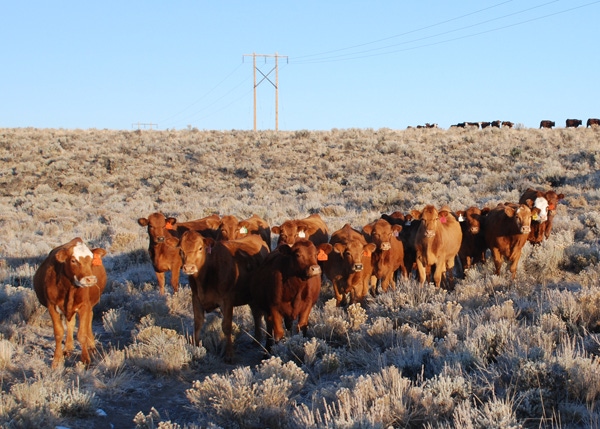Beef production relies on grazing to produce a product that is nutrient dense, and therefore can be sustainable in ways other food sources can’t.
August 3, 2017

One of the greatest challenges facing society is how to feed the 9 billion people that will inhabit the planet by 2050. Alan Savory, who developed the concept of Holistic Planned Grazing, said, “Without agriculture it is not possible to have a city, a stock market, bank, university, a church or army. Agriculture is the foundation of civilization, and the basis for any stable economy.” Agriculture plays a key role supporting society, but increasing demand will create challenges.
In the next 40 years, we will need to produce more food then has been produced in the last 4,000 years. Put another way, by the year 2050, agriculture will have to produce twice as much food annually than we are currently producing today.
To produce the needed increase in food using current production practices will require 24% more land, which is an especially daunting challenge considering that a third of our earth’s land mass is already used for food production.
This will put tremendous pressure on resources such as water availability and land utilization, and could lead to a greater reliance on costly inputs such as fertilizer, pesticides and herbicides. And this increase in needed food production will have to happen in the face on increasingly unstable weather patterns, resulting in greater extreme weather events such as drought, flooding, blizzards and other weather events becoming an even greater risk factor for agriculture.
Given these challenges, consumers are starting to ask questions. For example, more people want to know where their food comes from and how it is produced. At the heart of these changing consumer demands is a desire to feel good about the food they eat and feed to their families. Consumers are being bombarded with media messages concerning what they should and shouldn’t eat, and the perceived risks with modern agriculture making the average consumer much more aware, and armed with higher expectations.
In the face of pressure to feed a growing world population, a need to utilize resources more wisely and rising consumer expectations, several initiatives have been developed. These include the U.S. Roundtable for Sustainable Beef, the Canadian Roundtable for Sustainable Beef, The Global Roundtable for Sustainable Beef, the Roundtable for Sustainable Rangelands, and state and national grazing lands coalitions to name a few.
Many of these initiatives have been working to create clarity about what sustainable beef production looks like, which has come to mean beef that is produced in such a way that is socially responsible, environmentally sound and economically viable. Which comes down to producing more with less. Less inputs, less cost and more consideration for the increasing expectations of consumers.
However, mostly overlooked in the sustainability discussion is beef’s sustainability advantage. Beef production relies on grazing to produce a product that is nutrient dense, and therefore can be sustainable in ways other food sources can’t.
Grazing is not only generally the cheapest source of feed—a key component of being economically viable and an important element of sustainability—but also when managed correctly is a renewable resource that contributes to increasing soil organic matter and contributing to carbon sequestration, a major focal area for the environmental community. If the environmental community is serious about carbon sequestration as a solution to climate change, it should consider grazing one of the tools in the toolbox.
Here’s why: Adaptive or holistic grazing management contributes to healthy plant communities as a result of increased plant vigor and, most importantly, more vibrant populations of microbes in the soil, which contributes to increased soil organic matter (SOM). Improved SOM increases the water infiltration and holding capacity of soil, and makes nutrients much more available to plants.
For example, a 1% increase in soil carbon (SOM) equates to increasing the soil water holding capacity by as much as 60,000 gallons per acre. For comparison, that’s enough water to grow several tons of hay in many places.
Putting water into the ground instead of running off the land has additional benefits for society by keeping nutrients out of waterways and by contributing to clean water, water storage, reduced loss of topsoil, healthy soil biology, greater food production and better wildlife habitat to name a few. That means healthy farms and ranches. And healthy farms and ranches contribute to the economic vitality of rural communities and an abundant, healthy supply of food.
As agriculture looks for ways to feed a growing population in a sustainable way, there will be a need for a variety of solutions. However, few solutions will have as large of a positive contribution as improving grazing management. Already there have been some crazy ideas proposed such as meatless Mondays, and a carbon tax on cows as society looks for ways to increase sustainability and feed a growing population.
However, one of the most significant ways to contribute to overall sustainability is to improve soil health, which increases carbon sequestration and fertility. And improved grazing management is one of the most effectives ways to improve soil health. Because of the leveraged effect of adaptive grazing, focusing on the grassroots of sustainability has the potential to do more for sustainability than almost any other solution.
About the Author(s)
You May Also Like



